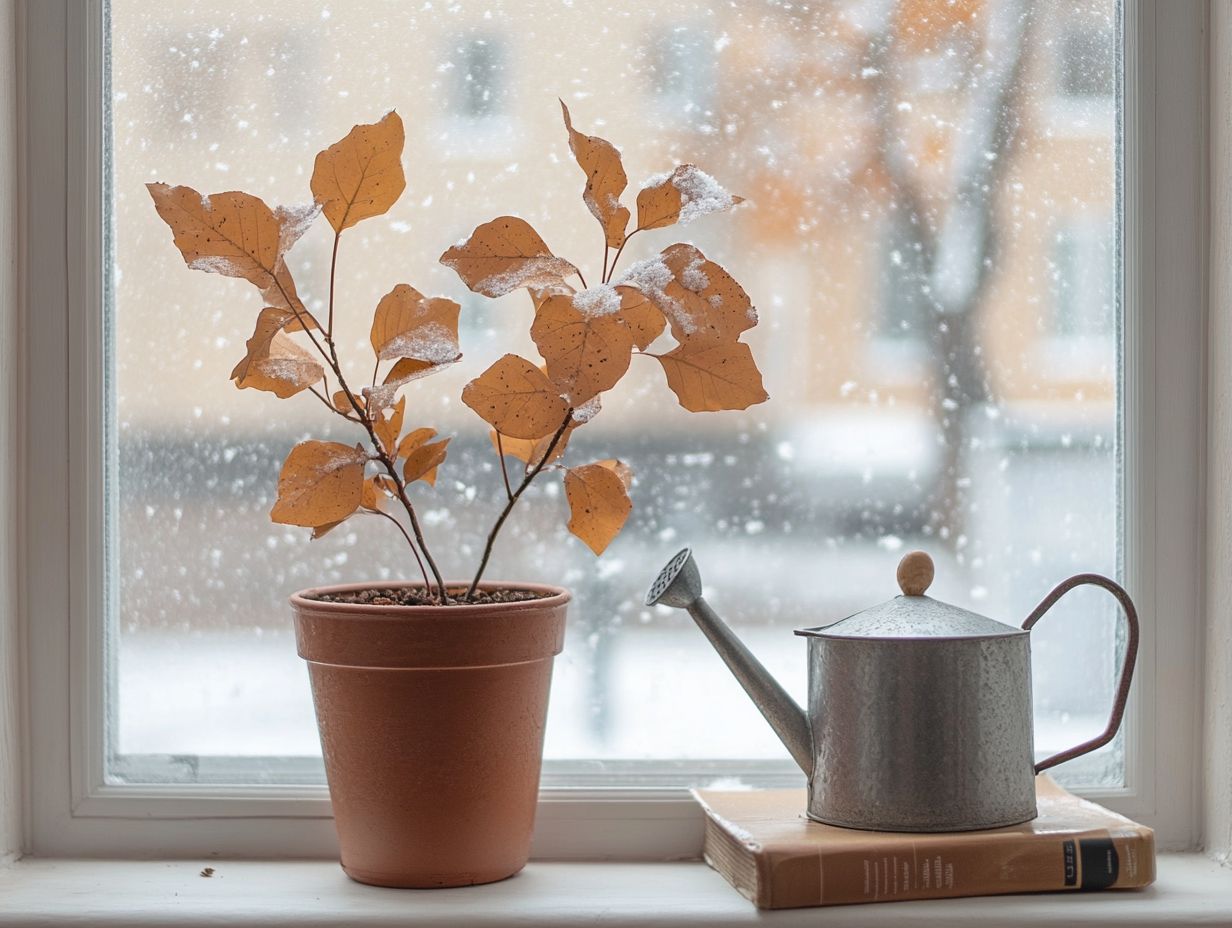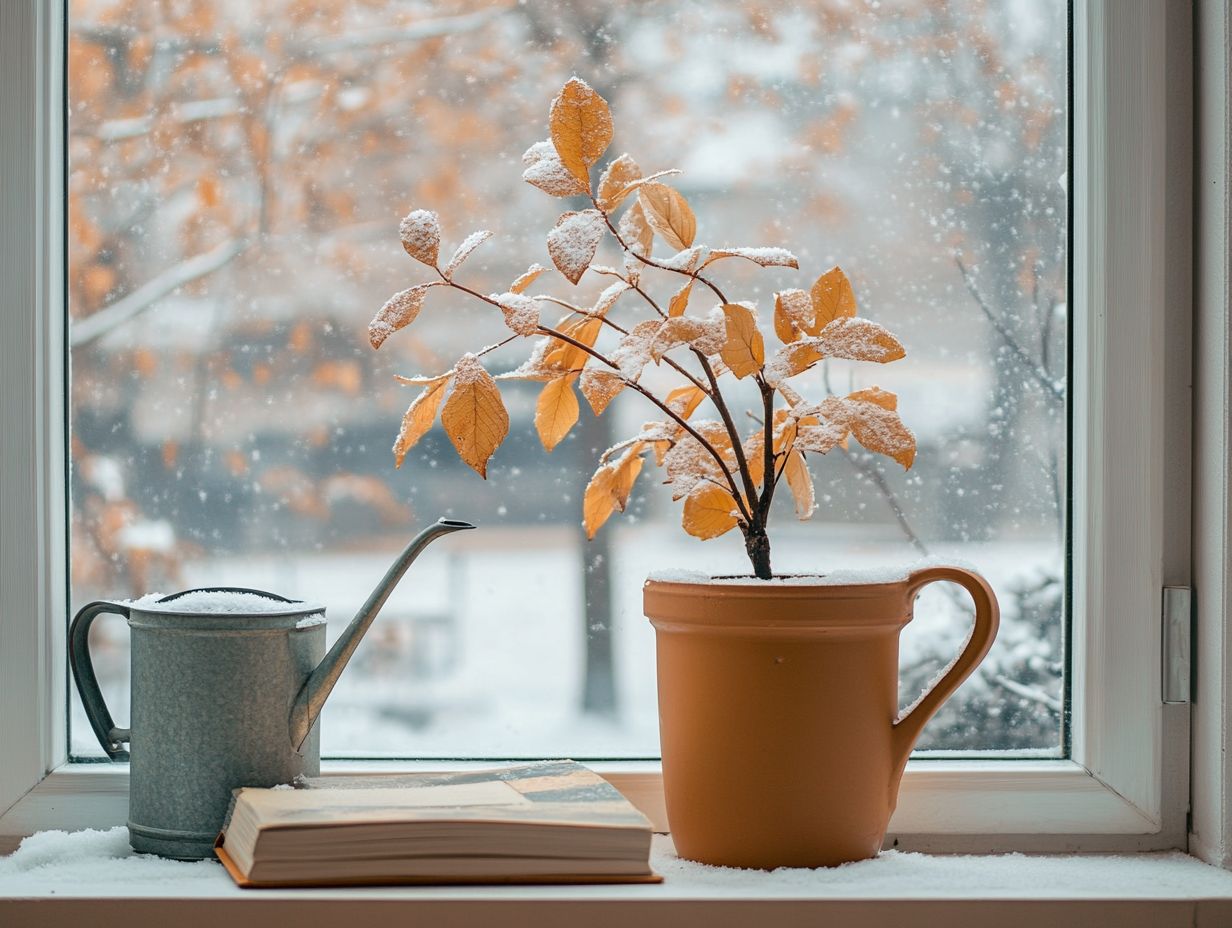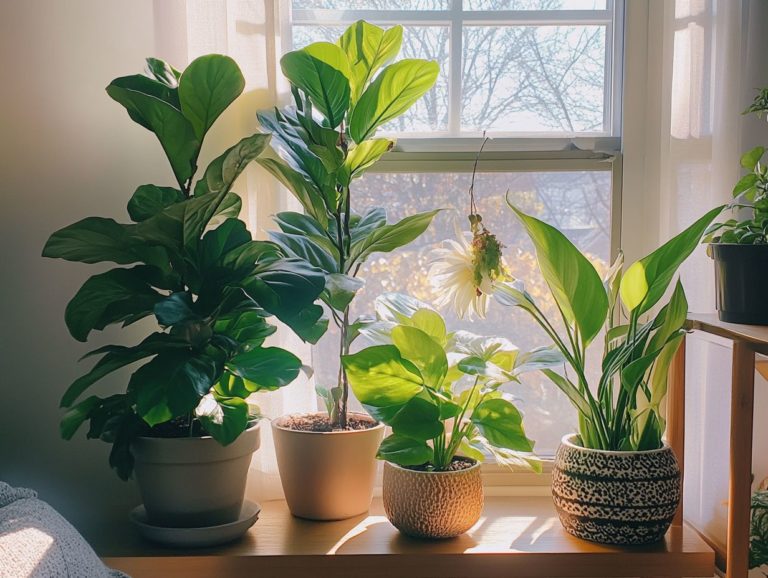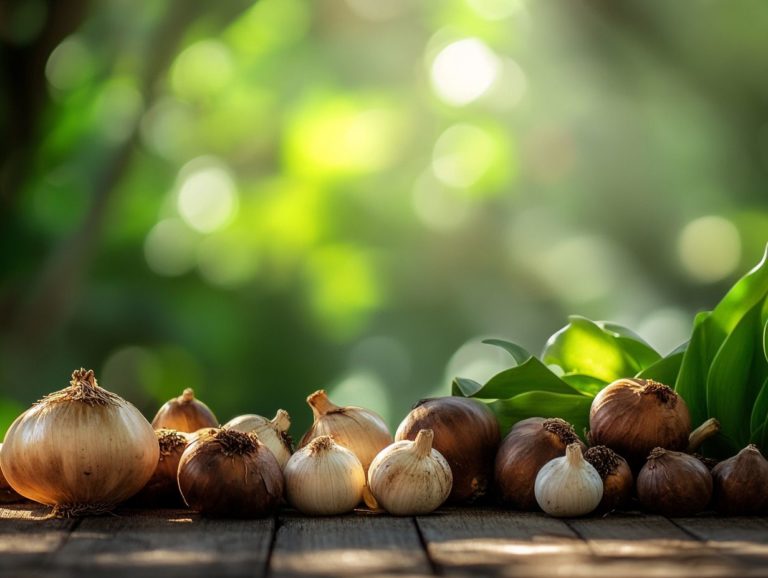Identifying Plant Needs in Winter Months
As winter envelops the landscape, it’s easy to overlook the distinct needs of your plants during this frosty season. Understanding how winter impacts their health and vitality is essential for nurturing a vibrant garden.
This article delves into the signs of plant stress, effective watering strategies, and protective measures to shield them from harsh conditions. It also guides you through selecting hardy varieties and preparing your plants for the impending transition to spring.
Get ready to empower your green companions to not just survive, but thrive this winter!
Contents
- Key Takeaways:
- Understanding Plant Needs in Winter
- Signs of Plant Stress in Winter
- Providing Proper Watering in Winter
- Protecting Plants from Winter Elements
- Choosing the Right Plants for Winter
- Preparing Plants for Spring
- Frequently Asked Questions
- What are the main needs of plants during the winter months?
- How can I protect my plants from cold temperatures during the winter?
- Do plants still need water during the winter months?
- What type of light do plants need in the winter?
- How can I tell if my plants are getting enough light in the winter months?
- Do I need to fertilize my plants in the winter months?
Key Takeaways:

- Winter can be a challenging time for plants. Understanding their needs during this season is crucial for their survival.
- Identify signs of stress in your plants during winter such as wilting, discoloration, and stunted growth to provide proper care.
- Adjusting watering schedules helps protect plants from the harsh winter elements and ensure their survival.
Understanding Plant Needs in Winter
Understanding the specific needs of plants during the winter months is crucial for successful plant care and winter plant identification. Different types of plants whether woody, herbaceous, or evergreen display distinct behaviors and requirements in the cold season, profoundly influencing their growth stages and overall health.
By familiarizing yourself with effective plant observation techniques, including field guides, you can nurture your plants throughout winter. This ensures their vitality as the seasons transition.
How Winter Affects Plants
Winter significantly influences various plant species, shaping their dormancy, growth stages, and habitat preferences.
During this chilly season, the natural processes that govern plant survival come into play, prompting many species to enter a state of growth stasis. This is when plants slow down their growth to survive colder months. This dormancy phase not only conserves energy but also heightens their vulnerability to environmental stressors like frost damage and desiccation.
For instance, you may notice that certain plants employ specialized strategies, such as accumulating protective compounds to boost their tolerance to low temperatures. Others might develop deeper root systems or benefit from the insulating blanket of snow cover, which helps them endure harsh conditions and optimize water extraction.
This preparation ultimately paves the way for a vigorous recovery and growth when spring finally arrives.
Signs of Plant Stress in Winter
Recognizing the signs of plant stress during winter is essential for preserving their health and ensuring they endure the challenges of the colder months. Being vigilant in this regard can make all the difference in your plants’ survival and vitality.
Identifying Symptoms of Insufficient Care
Symptoms of insufficient care in your plants during winter can reveal themselves in various ways, making it crucial for you to recognize these signs for timely intervention.
For instance, if you notice the leaves of a plant turning yellow or displaying discoloration, it may indicate issues such as overwatering or insufficient light. Similarly, if the leaves are wilting despite your regular watering routine, it could suggest root rot or temperature stress conditions that tend to surface more frequently in the colder months.
Stunted growth is another common issue during winter, often stemming from inadequate nutrients or poor soil conditions. By closely observing these symptoms, you can take proactive steps to remedy the situation, such as adjusting your watering schedule, enhancing light exposure, or even repotting if necessary.
Providing Proper Watering in Winter

Proper watering in winter is crucial for your plants’ health. Their needs change dramatically with temperature and water levels.
Adjusting Watering Schedule and Methods
Modify your watering schedule during winter for your plants’ long-term health. Lower evaporation rates and cold temperatures require careful attention.
Keep in mind the specific needs of each plant. Succulents and cacti thrive with less water, while tropical plants appreciate consistent hydration.
Regularly check the soil moisture. A moisture meter can tell you when it’s time to water.
Water in the morning. This helps your plants absorb water before the temperature drops.
Protecting Plants from Winter Elements
Shielding your plants from harsh winter conditions is vital. Use coverings and barriers to protect them from extreme weather.
Using Coverings and Barriers
Coverings and barriers are your secret weapons against winter. They help keep your plants healthy and strong.
Burlap wraps are a versatile option. They insulate against cold while allowing moisture to escape.
Applying burlap to delicate shrubs prevents windburn and frost damage.
Snow fences are another effective barrier. They reduce wind exposure and protect against drifting snow.
Place these fences strategically to create a warm, moisture-retentive microclimate around your plants.
Choosing the Right Plants for Winter
Selecting the right plants is key to a vibrant winter garden. Hardy and cold-tolerant varieties ensure your garden thrives during cold months.
Hardy and Cold-Tolerant Varieties

Hardy plants withstand low temperatures and harsh conditions. Consider varieties like Winter Jasmine, with bright yellow blooms, or Hellebores, which bloom bravely through the snow.
Evergreens like Boxwood and Juniper bring consistent greenery and charm to your winter landscape.
Ensure proper drainage to prevent root rot. Shield these plants from winds with mulch or windbreaks.
These hardy varieties not only survive but thrive, adding beauty and resilience to your garden.
Preparing Plants for Spring
Preparing your plants for spring starts in winter. This proactive approach helps them thrive as temperatures rise.
Get started on your winter gardening today!
Tips for Transitioning Plants to Warmer Weather
Transitioning your plants to warmer weather requires careful attention and specific strategies to ensure their successful growth as spring approaches.
Creating a nurturing environment is essential for supporting these changes. Start by gradually introducing your plants to sunlight. Begin with just a few hours of indirect light and slowly increase their exposure over the course of a week or two. This gradual acclimatization helps prevent shock and allows your plants to adjust comfortably.
Review and adapt your watering routines. As temperatures rise, watch your plants closely! They may need more frequent watering to thrive. Proper drainage is vital; excess moisture can lead to root rot. By monitoring both light and water, you ll promote thriving growth as your plants adapt to the changing season.
Frequently Asked Questions
What are the main needs of plants during the winter months?
Plants need protection from cold temperatures, enough water, and the right amount of light during the winter months.
How can I protect my plants from cold temperatures during the winter?
Protect your plants with mulch, frost blankets, or by moving them to a cozy, sheltered spot!
Do plants still need water during the winter months?
Yes, plants still need water during the winter months. However, they require less water compared to other seasons. It’s important to water them deeply and less frequently to avoid waterlogging the roots.
What type of light do plants need in the winter?
Plants need bright, indirect light during the winter months. You can provide this by placing them near a window or using grow lights. For winter plant guide enthusiasts, observing the winter buds and leaf scars can also help determine the best light conditions, particularly for deciduous species.
How can I tell if my plants are getting enough light in the winter months?
If your plant’s leaves are turning pale green or yellow, it may be a sign that they are not getting enough light. You can move them to a brighter location or use grow lights to provide supplemental light. Identifying plants using plant identification techniques can also assist in recognizing signs of light deficiency, especially for herbaceous plants.
Do I need to fertilize my plants in the winter months?
In general, plants do not need to be fertilized during the winter months. However, if your plant is showing signs of nutrient deficiency, you can use a slow-release fertilizer specifically formulated for winter use. For those interested in foraging practice, knowing which edible wild plants can be found during this season can also enhance your knowledge, particularly in regions like Minnesota.






